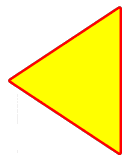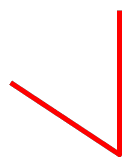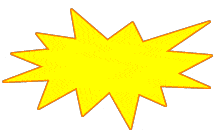TIEPolylineLayer.SetPoints
Declaration
// Point array overloadsprocedure SetPoints(Points: array of TPoint; PointBase: TIEPointBase = iepbRange); overload;
procedure SetPoints(Points: array of TPoint; ClosePolyline: Boolean; PointBase: TIEPointBase = iepbRange); overload;
procedure SetPoints(Points: array of integer; ClosePolyline: Boolean; PointBase: TIEPointBase = iepbRange); overload;
procedure SetPointsD(Points: array of TDPoint; Count: Integer; PointBase: TIEPointBase); overload;
// Complex path overload
procedure SetPoints(Points: array of TDPoint; PointFormats: array of TIEPointFormat; PointBase: TIEPointBase); overload;
// Shape fill overload
procedure SetPoints(Shape: TIEShape; ClosePolyline: Boolean = True); overload;
// Arc overload
procedure SetPoints(StartAngle, SweepAngle: Double; PtCount: Integer = 0); overload;
// String overload
procedure SetPoints(const Points: string; ClosePolyline: Boolean; ScalePoints: Boolean = true); overload;
Description
Set the points of the polyline.Each point of the polyline is represented by an x and y value in the range 0 to 1000. Where (0, 0) is the top-left pixel of the layer and (1000, 1000) is the bottom-right.
If you use the Shape overload, the point array will be filled with a TIEShape.
You can use the string overload to import point lists from other sources. It should be formatted as follows x1,y1,x2,y2,x3,y3, etc. Spaces, tabs and hard returns can be used instead of commas. If ScalePoints is true the layer will maintain its existing size (any range of input values can be used and will fill the existing layer).
There is also a complex path overload that allows you to add curves and arcs.
PolylineClosed will be set to ClosePolyline.
Example
// Draw a triangle polygonWith TIEPolylineLayer( ImageEnView1.CurrentLayer ) do
begin
ClearAllPoints();
AddPoint( 500, 0 );
AddPoint( 1000, 1000 );
AddPoint( 0, 1000 );
PolylineClosed := True;
end;
ImageEnView1.Update();
// Which is the same as..
var
shapePoints: array of TPoint;
begin
SetLength( shapePoints, 3 );
shapePoints[0] := Point( 500, 0 );
shapePoints[1] := Point( 1000, 1000 );
shapePoints[2] := Point( 0, 1000 );
TIEPolylineLayer( ImageEnView1.CurrentLayer ).SetPoints( shapePoints, True );
ImageEnView1.Update();
end;
// Which is the same as...
TIEPolylineLayer( ImageEnView1.CurrentLayer ).SetPoints( [ Point(500, 0), Point(1000, 1000), Point(0, 1000) ], True );
ImageEnView1.Update();
// Which is the same as...
TIEPolylineLayer( ImageEnView1.CurrentLayer ).SetPoints( iesTriangle, True );
ImageEnView1.Update();

// If PolylineClosed is not enabled, we get a polyline, instead of a polygon
TIEPolylineLayer( ImageEnView1.CurrentLayer ).PolylineClosed := False;
ImageEnView1.Update();

// Fill points with Star shape
TIEPolylineLayer( ImageEnView1.CurrentLayer ).SetPoints( iesStar5, True );

// Fill points with Explosion shape
TIEPolylineLayer( ImageEnView1.CurrentLayer ).SetPoints( iesExplosion, True );

// Fill points with Arrow shape
TIEPolylineLayer( ImageEnView1.CurrentLayer ).SetPoints( iesShootingArrowSW, True );

// Fill points with Lightning shape
TIEPolylineLayer( ImageEnView1.CurrentLayer ).SetPoints( iesLightningLeft, True );

// Fill layer with arc from 270 (6 o'clock) anti-clockwise to 180 (9 o'clock)
StartAngle := 270;
EndAngle := 90;
SweepAngle := EndAngle - StartAngle + 360;
if SweepAngle >= 360 then
SweepAngle := SweepAngle - 360;
TIEPolylineLayer( ImageEnView1.CurrentLayer).SetPoints( StartAngle, SweepAngle );
// Add a polygon based on a string
triangleStr := '250, 0, 0, 500, 500, 500';
ImageEnView1.LayersAdd( ielkPolyline, 100, 100, 400, 400 );
TIEPolylineLayer( ImageEnView1.CurrentLayer ).SetPoints( triangleStr, True );
ImageEnView1.Update();
// Insert a polygon (closed polyline) of a star
ImageEnView1.LayersAdd( ielkPolyline, 100, 100, 400, 400 );
TIEPolylineLayer( ImageEnView1.CurrentLayer ).SetPoints( [ 125,0, 155,95, 250,95, 175,155, 202,250, 125,193, 48,250, 78,155, 0,95, 98,95 ], True, iepbBitmap );
ImageEnView1.Update();
// Create a polyline layer with a complex path
ImageEnView1.LayersAdd( ielkPolyline );
polyLayer := TIEPolylineLayer( ImageEnView1.CurrentLayer );
polyLayer.BorderColor := clWebOrange;
polyLayer.BorderWidth := 30;
polyLayer.FillColor := clNone;
polyLayer.PolylineClosed := False;
SetLength( pts, 6 );
SetLength( fmts, 6 );
fmts[0].Action := iepaMoveTo;
pts[0] := DPoint( 10, 10 );
fmts[1].Action := iepaLineTo;
pts[1] := DPoint( 90, 10 );
fmts[2].Action := iepaMoveTo;
pts[2] := DPoint( 50, 10 );
fmts[3].Action := iepaLineTo;
pts[3] := DPoint( 50, 190 );
fmts[4].Action := iepaMoveTo;
pts[4] := DPoint( 10, 190 );
fmts[5].Action := iepaLineTo;
pts[5] := DPoint( 90, 190 );
polyLayer.SetPoints( pts, fmts, iepbBitmap );
ImageEnView1.Update();

// Create a curved polyline layer with a complex path
ImageEnView1.LayersAdd( ielkPolyline );
polyLayer := TIEPolylineLayer( ImageEnView1.CurrentLayer );
polyLayer.BorderColor := clGreen;
polyLayer.BorderWidth := 3;
polyLayer.FillColor := clYellow;
// M 70,30
polyLayer.AddPoint( 70, 30, iepbBitmap, iepaMoveTo );
// C 130,-30 130,90 70,30
polyLayer.AddPoint( 70, 30, iepbBitmap, iepaBezierCurveTo, False, 130, -30, 130, 90 );
// C 10,90 10,-30 70,30 Z
polyLayer.AddPoint( 70, 30, iepbBitmap, iepaBezierCurveTo, True, 10, 90, 10, -30 );
ImageEnView1.Update();

See Also
◼Points◼GetPoints
◼AddPoint
◼SetPoint
◼RemovePoint